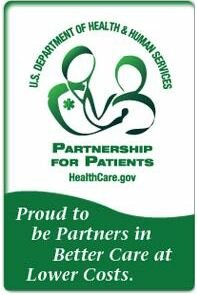Celebrating the Success of the Partnership for Patients

Recently, Partnership for Patients (PfP) issued a report on its achievements. You will recall from a previous post that the PfP is a very large national quality improvement learning collaborative with two aims: to improve safety in acute care hospitals and to improve coordination of care at discharge to prevent readmissions. The PfP is a public-private partnership that seeks national change by setting clear aims, aligning and engaging multiple Federal partners and programs, aligning and engaging multiple private partners and payers, and establishing a national learning network available to all healthcare providers and facilities.
I participated as a patient advocate in the work of the PfP. My fellow patient advocates and I were invited to give input in every meeting, every phone call, every critical decision. The patient advocates imbued passion for safety into the conversation. This passion set the tone for co-operation and action among the members of the campaign. Several times I was part of a discussion which bogged down in, what seemed to me, a standoff between two camps: those who believed that a proposed policy would save lives and thus should be adopted, and those who believed that the policy was too difficult and/or costly for hospitals to execute. A patient advocate took to the airwaves, and gave her personal story of the harm that she suffered because the policy was not in place. The tone immediately changed from “this is too difficult/costly to achieve” to “we must do whatever we can to keep patients safe.” Within minutes the team moved forward, working co-operatively for patient safety. I believe the patient’s voice was a major contribution to the overall success of the campaign.
The Partnership for Patients and its over 3,700 participating hospitals were focused on making hospital care safer, more reliable, and less costly through the achievement of two goals:
- Making Care Safer. By the end of 2014, preventable hospital-acquired conditions would decrease by 40% compared to 2010.
- Improving Care Transitions. By the end of 2014, preventable complications during a transition from one care setting to another would be decreased so that all hospital readmissions would be reduced by 20% compared to 2010.
As part of the PfP campaign, baseline measures were collected on nine hospital-acquired conditions (e.g., adverse drug events, pressure ulcers and surgical site infections) in 2010. At the end of the initial engagement period of the PfP, a cumulative total of 1.3 million fewer hospital-acquired conditions (HACs) were experienced by hospital patients over the 3 years (2011, 2012, 2013) relative to the number of HACs that would have occurred if rates had remained steady at the 2010 level. It is estimated that approximately 50,000 fewer patients died in the hospital as a result of the reduction in HACs, and approximately $12 billion in health care costs were saved from 2010 to 2013.
It was so gratifying to be part of this effort that keeps the patient at the center of health care quality improvement. The momentum that was created through the PfP is exciting, and I look forward to the continuation of the patient safety movement that is driven by the patient voice.









